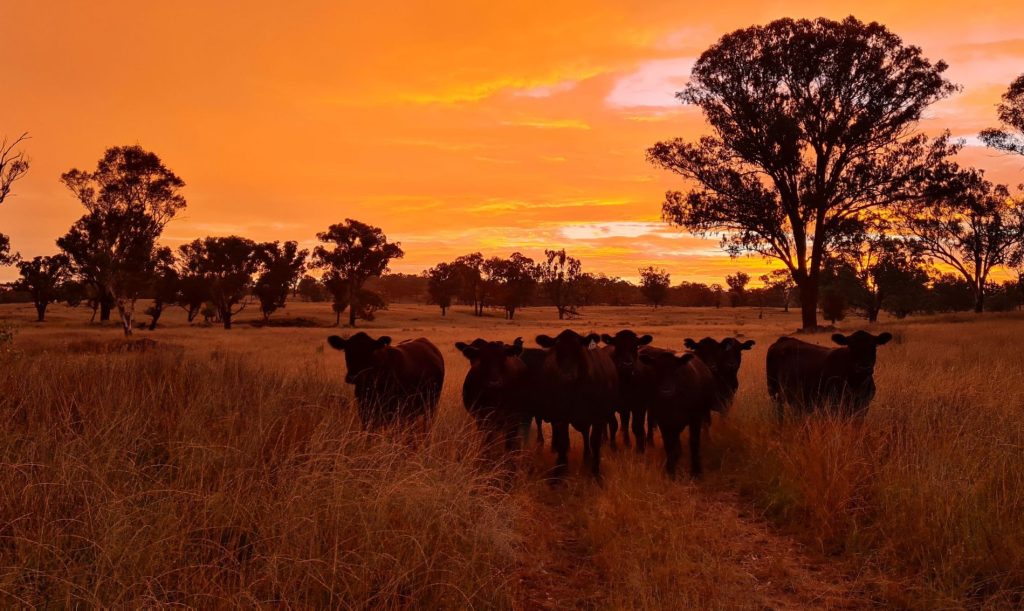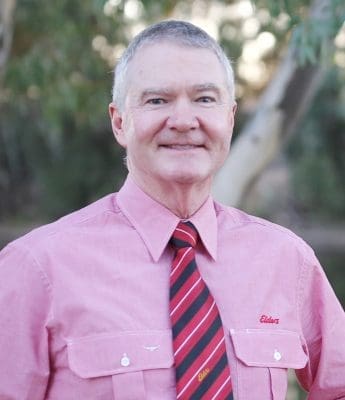
The historic high rainfall grazing property Stony Batter, near Bundarra in the New England region of NSW, has been listed for $13.5 million bare after failing to sell at auction.
TWO weeks ago, rural marketing agents in Queensland and the NT discussed the impact of high vendor expectations and potential market caution after a number of properties failed to sell at auction recently.
This week, property specialists in the states further south give their mid-year take on the current state-of-play, the impacts of rising interest rates and cost of production, and a softening trend in cattle values, suggesting a relatively uniform outlook for the southern and eastern states of Australia.

Tom Russo
Elders Real Estate boss Tom Russo doesn’t believe increased interest rates coming off record lows will impact farmland prices in the short to medium term.
“Australian commodity prices remain very high across almost all categories and seasonal forecasts suggest production will also be strong. Conversely, farmland transaction volumes are historically low, with demand materially outweighing buying opportunities,” he said.
Mr Russo said the weight of capital looking to be deployed in Australian agriculture was far exceeding available opportunities.
“A reduction in transaction volumes is fuelling this supply/demand dynamic and it remains a seller’s market.”
He said the scene was therefore set for ongoing land price appreciation, albeit at potentially relatively subdued rates of growth.
“The factors weighing against this are increasing interest rates and input cost inflation. Both are factors with the potential to cut into margins should commodity prices ease, or supply is reduced through the event of unfavourable seasonal conditions.”
According to the latest Elders Rural property update, the national median price per hectare growth declined between January and March, because of fewer high-value transactions in the eastern states.
Mr Russo said transaction volume reached a new low.
“This isn’t unusual for what is a short quarter in terms of workdays, however it does continue a declining trend which will likely keep pressure on prices in 2022,” he said.
In contrast, the one year rolling median price per hectare increased by five percent to $7413/ha, continuing a positive trend.
Col Medway, LAWD
LAWD director Col Medway doesn’t believe there is any hesitancy or caution in the rural property market, evidenced by the number of buyers outnumbering sellers.

Col Medway
“There is still plenty of inquiry on assets we have in the market. Despite some headwinds, underlying profitability is being driven by seasonal conditions and positive commodity prices and at this stage, it is going to be a better than average year for most producers.”
In recent times, the only LAWD-listed southern states property that has failed to sell is the historic high rainfall grazing property Stony Batter. Located at Bundarra in the renowned New England region of New South Wales, the 1696ha property has been listed for $13.5 million bare.
Mr Medway said there were very few unsold properties which showed there was still plenty of vigour in the market.
Interest rates
Despite rising interest rates, Mr Medway said they were still at historically low levels.
“Admittedly, there have been a couple of large jumps in interest rates but this is off an extremely low base. There was only one way interest rates were going to go and they couldn’t go any lower.”
“Over the last six months, banks have tested the serviceability of borrowers at between 5.5pc and 6.5pc – but none of the banks, in my discussion with them, believe interest rates will rise to such levels,” he said.
A very wise and large landholder, now well into his eighties, recently told Mr Medway he used to pin his ears back any time he could borrow money at under 7pc.
Mr Medway said when it comes to marketing a property, the key was finding a value between a buyer and a seller.
“For the past five years, the boot has been on the seller’s foot. When the market is rising, reserves are set at a vendor’s aspirational price, but when values start to flatten out, those ambitions are less likely to be met.”
“If a property doesn’t sell at auction despite registered bidders who are finance approved, it means those participants didn’t see value at the vendor’s price,” he said.
Mr Medway said the southern market was still experiencing some of the best conditions ever seen.
“The year-on-year growth experienced over the last five years has certainly never occurred previously during my career. Even if the heat disappears from the market, it doesn’t mean values will decline – the worst-case scenario is they will plateau.”
New South Wales

Richard Gemmell
Elders NSW manager Richard Gemmell reports demand remains high in his region for well-managed grazing land.
“Properties of scale, diversity and the ability to integrate into existing portfolios have been highly sought after in 2022.”
“Momentum should continue for the foreseeable future, driven by strong commodity prices and seasonal conditions.”
“Existing landowners with a carbon-neutral mandate have been active in the market and this trend will likely continue,” Mr Gemmell said.
Victoria and Tasmania

Nick Myer
Elders Victoria/Riverina and Tasmania manager Nick Myer is witnessing strong sentiment across most industry sectors in his region.
“Mixed farming assets that have the ability to produce quality beef, prime lamb, grain and oilseeds are in high demand. While new investors have been active, most of the demand is coming from existing players looking to expand their portfolios.”
Mr Myer expects prices to remain buoyant throughout the balance of 2022, underpinned by strong commodity prices and limited supply.
South Australia
Elders South Australia manager Phil Keen reports interest in livestock and cropping properties across SA remains high.
“Demand is being driven by bullish grain prices and a widespread, albeit late autumn break. This trend is expected to continue in 2022 despite interest rate rises.”
Nutrien Harcourts SA manager Simon McIntyre said pastoral properties continue to attract solid inquiry and are being strongly contested at auction.
“While scale is attracting some interstate producers across the border, it is locals who are expanding and diversifying.”

Simon McIntyre Landmark Harcourts
Mr McIntyre cited the recent sale of the 67,955ha Lake Stewart Station, 80km west of Tibooburra and 390km north of Broken Hill. It was purchased by a local producer from New South Wales’ western division for expansion.
To date, he hasn’t witnessed any market caution.
“It is too early to tell. The market will be tested by supply and demand this spring. Will there be an adjustment? Yes, but I don’t believe it will be dramatic. Property prices are likely to plateau rather than fall.”
Mr McIntyre said interested parties are assessing any pastoral offerings on rainfall and seasonal conditions, not on rising interest rates.
“Interest rates are not really a concern in the light of high commodity prices. Most producers recognise that interest rates are coming off historically low levels that can only head up.”
On the other hand, Mr McIntyre said higher input costs have impacted some purchases.
“Recently, an interested party pulled out of a registration of interest process when his fertiliser costs virtually doubled. That is one small example of what is going on in the marketplace.”
High vendor expectations
Mr McIntyre said an agent’s role is to maximise the outcome for the vendor, but vendors must recognise agents are not the market.
“In a rising market vendors believe the last maximum price paid for a property will be achieved again. If a property sale fails to realise their expectations because the market has shifted, then vendors also need to adjust their pricing.”

I wonder if mr Mcintyre has ever considered the opposite scenario to his view that an agents job is to maximise the outcome for the vendor.
Most times the vendor is leaving the industry so if the agent concentrated on maximising the outcome of the buyer the agents business is guaranteed into the future.